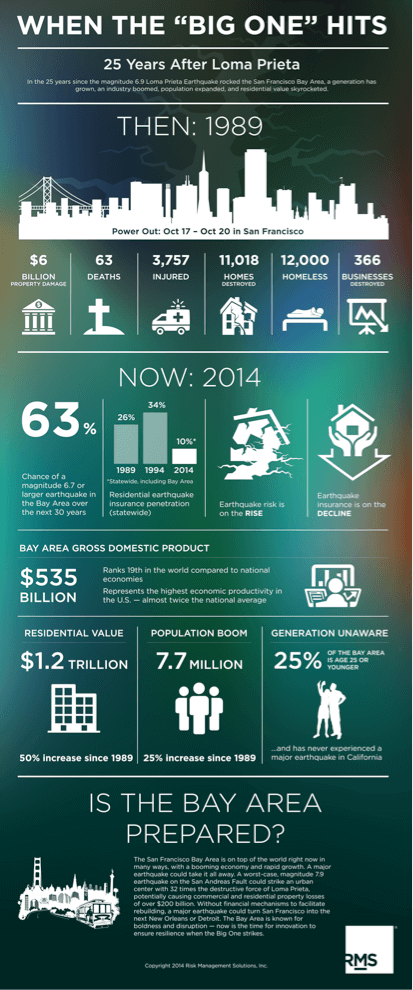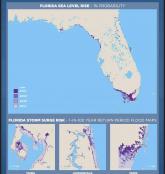The 25th anniversary of the Loma Prieta earthquake provides an opportunity to remember and reflect about what we lost. It also offers an opportunity to think about how we can better plan and prepare for an inevitable earthquake on the Bay Area’s precarious fault lines.
While we can’t accurately predict when an earthquake will strike, we can say there’s more at risk here then there was in 25 years ago; the Bay Area’s population has grown 25 percent and the value of residential property is now $1.2 trillion. A worst-case, magnitude 7.9 earthquake on the San Andreas Fault could strike an urban center with 32 times the destructive force of Loma Prieta, potentially causing commercial and residential property losses over $200 billion.
As part of our activities around the Loma Prieta anniversary, we gathered experts at a roundtable to discuss how to improve resilience in the Bay Area. Here are some of their lessons and observations:
Patrick Otellini, Chief Resilience Officer, San Francisco Think about people when crafting public policy:
Preparing for an earthquake is an enormous task. San Francisco is working to retrofit 4,800 buildings during the next seven years. You have to get the right people at the table when crafting policy changes and understand how citizens will be affected. There needs to be a dual focus: protect the public interest while building consensus on changes that protect safety and health.
Dr. Patricia Grossi, Earthquake expert and senior director of product model management, RMS
Don’t short change risk modeling:
Risk modeling helps us assess how we are planning for the next big event, highlights uncertainties and leads to thorough preparation. But any analysis shouldn’t just consider dollar signs; it should analyze the worst-case scenario and what an earthquake would do to our lives in the immediate days and weeks after.
Kristina Freas, Director of Emergency Preparedness, Dignity Health Retrofit hospitals and prepare to help the most vulnerable:
Hospitals are little cities. The same issues with supplies and logistics affecting metropolitan areas in a disaster would affect hospitals. Hospitals need to have plans to mitigate damages from water and power loss and protect patients.
Danielle Hutchings Mieler, Resilience Program Coordinator for the Association of Bay Area Governments
Bridge the private and public gap in infrastructure repair:
There’s been progress in retrofitting public buildings. But many private facilities – homes, businesses and private schools – are vulnerable. This is problematic because the Bay Area is growing in areas like the shoreline, which are close to fault lines and at greater risk. Work is needed to ensure that all types of buildings – both private and public – are well prepared and sturdy.
Lewis Knight, planning and urban design practice leader, Gensler
Think different about infrastructure and retrofitting:
Many engineering firms report to Wall Street and big infrastructure. They aren’t truly considering changes that need to be made to protect communities affected by both earthquake risk and climate change. There needs to be frank discussions about how infrastructure can be part of a defense against natural disasters.
What else is crucial to consider when thinking about the next earthquake?







